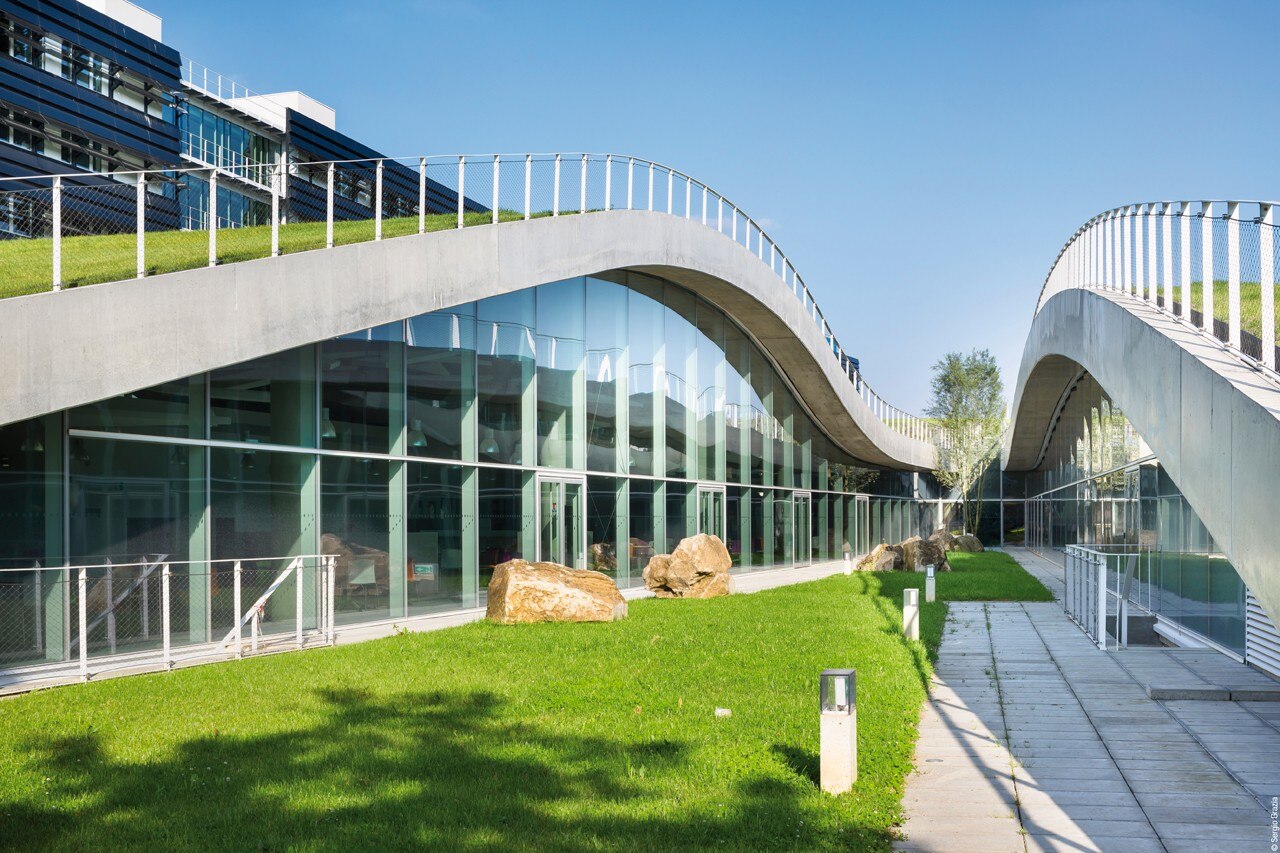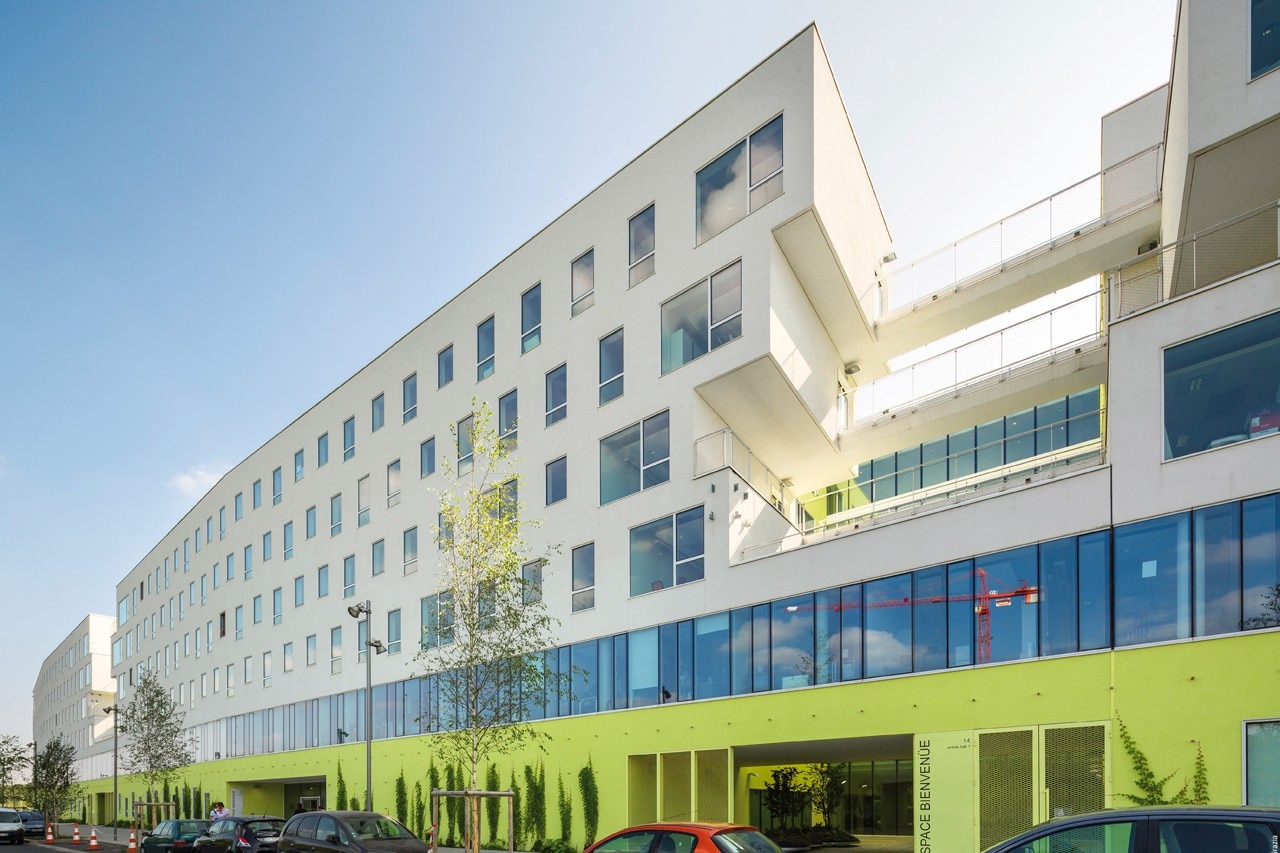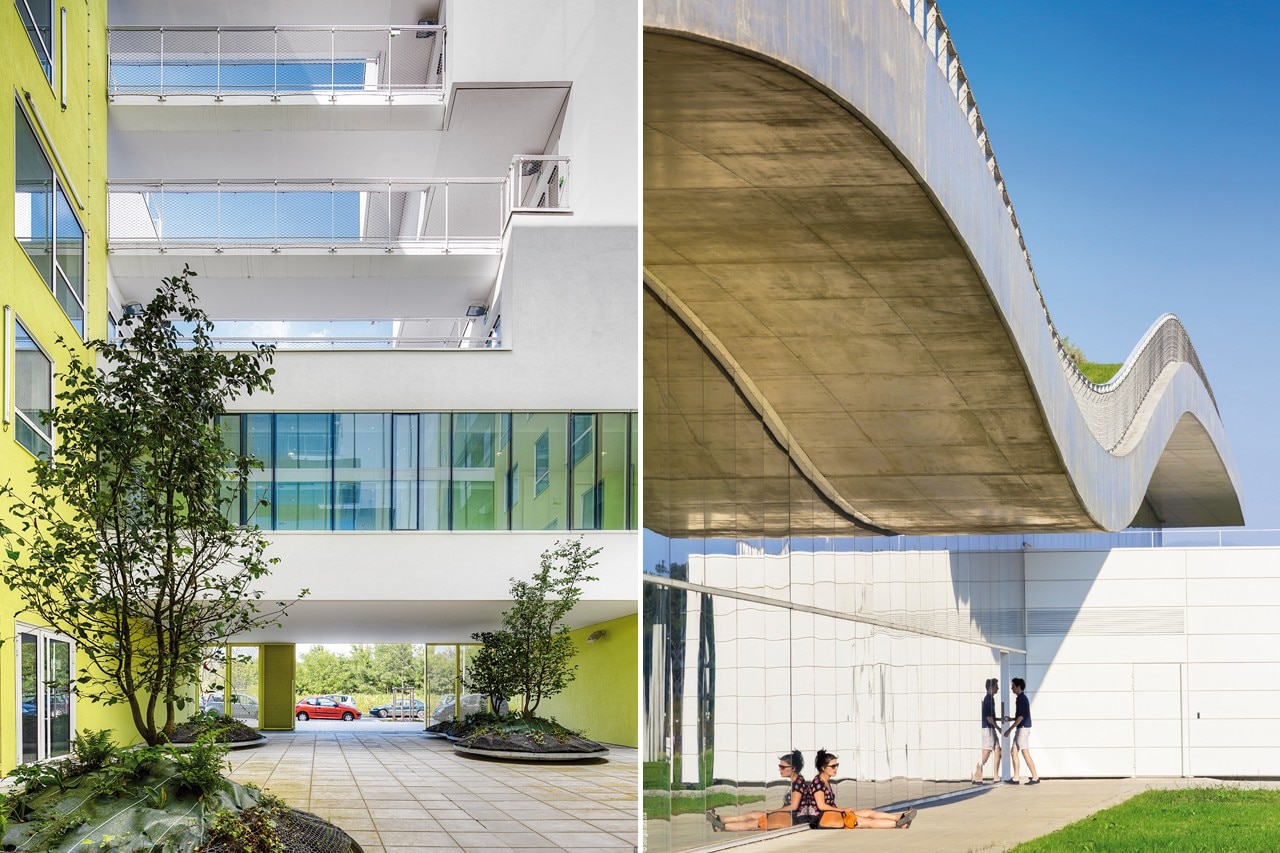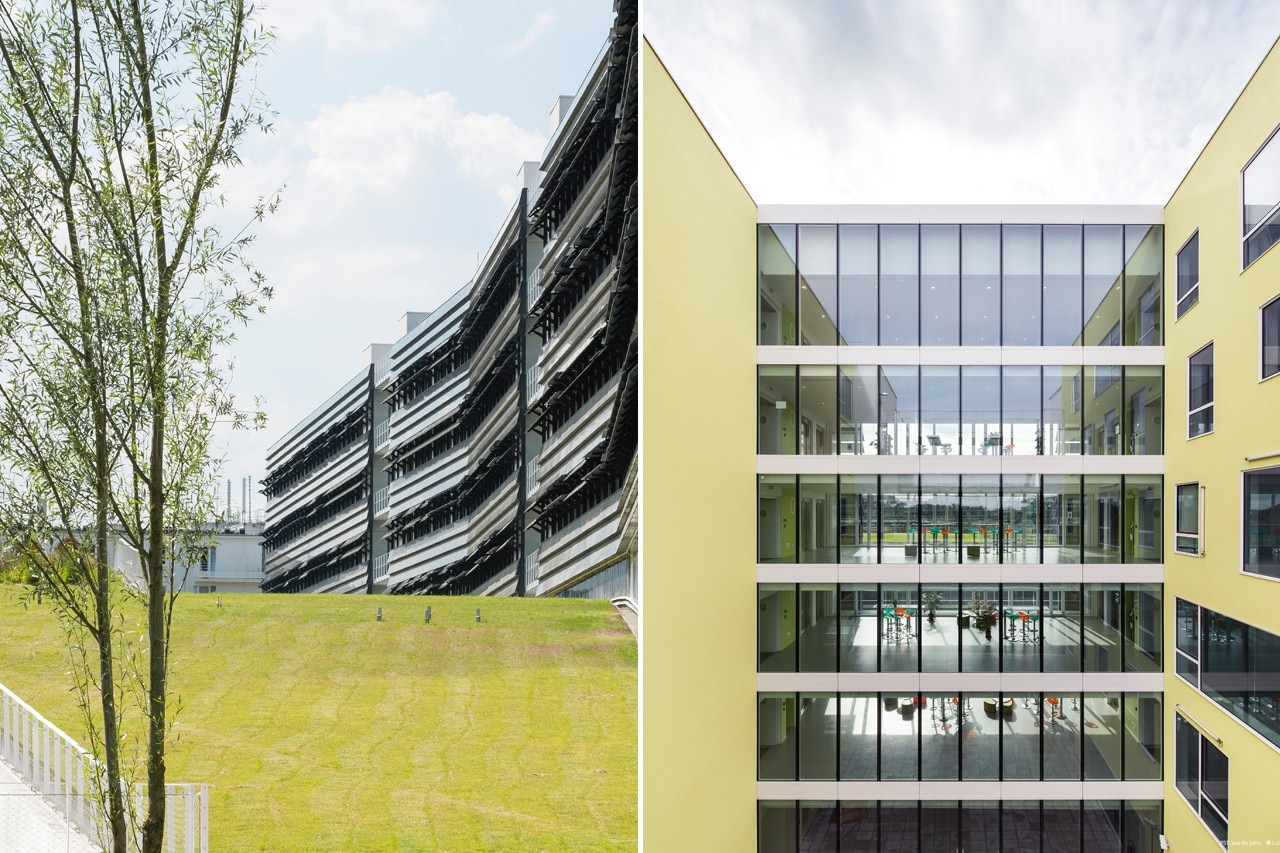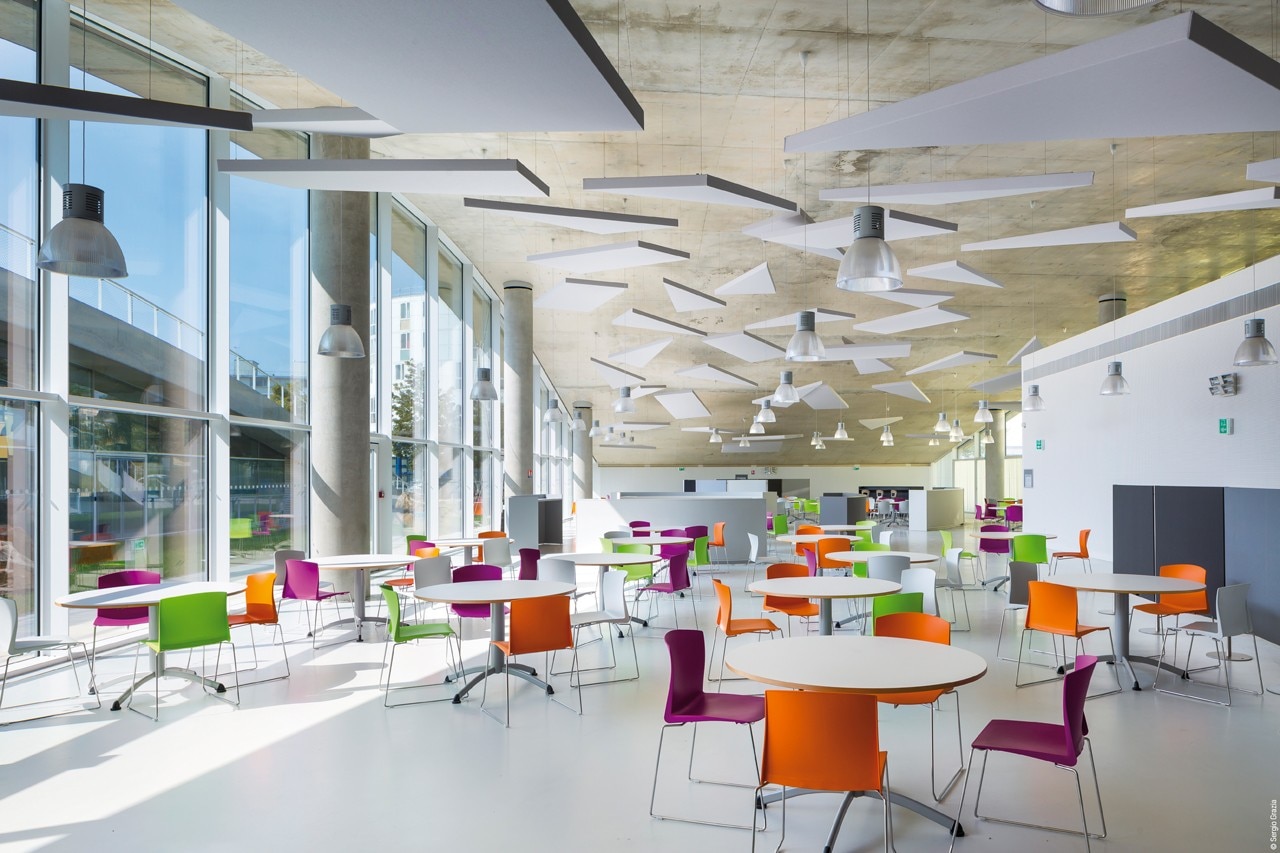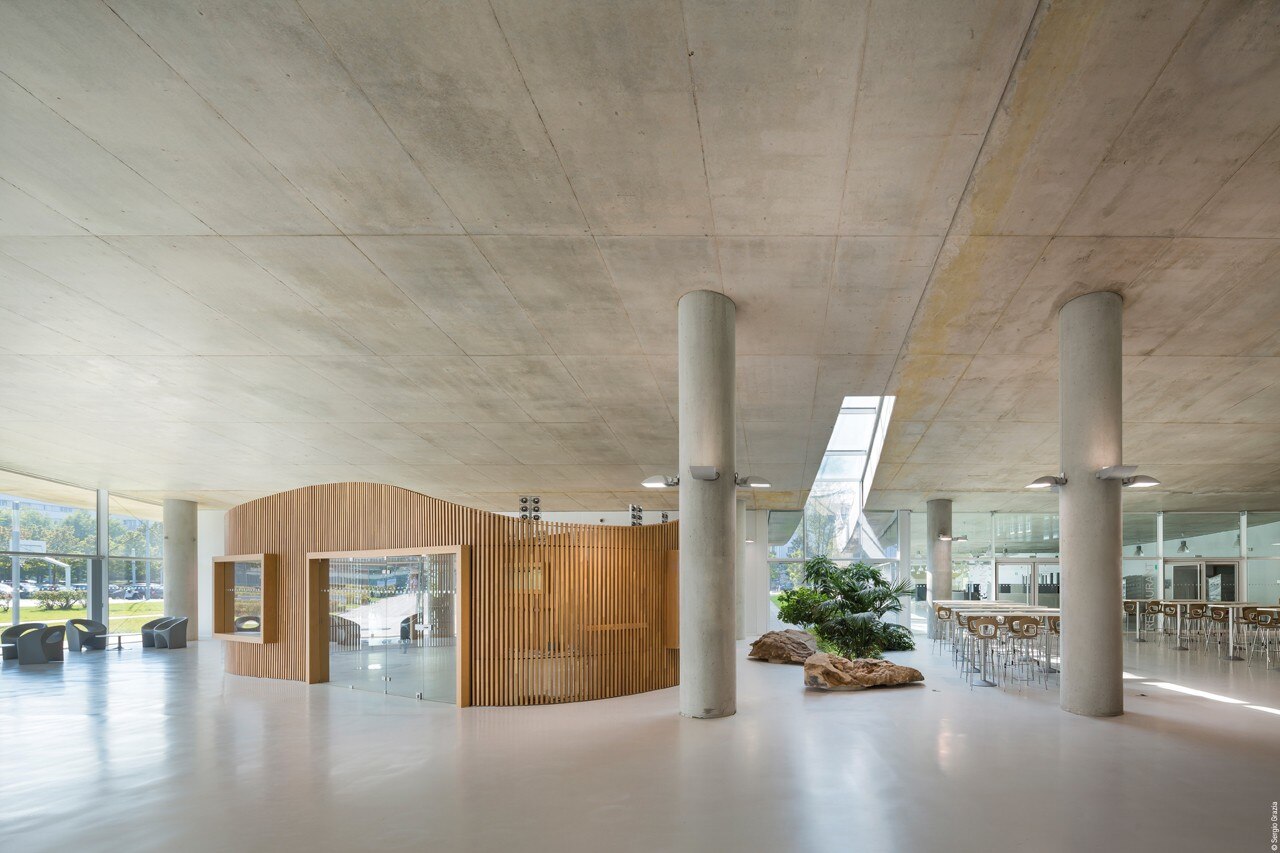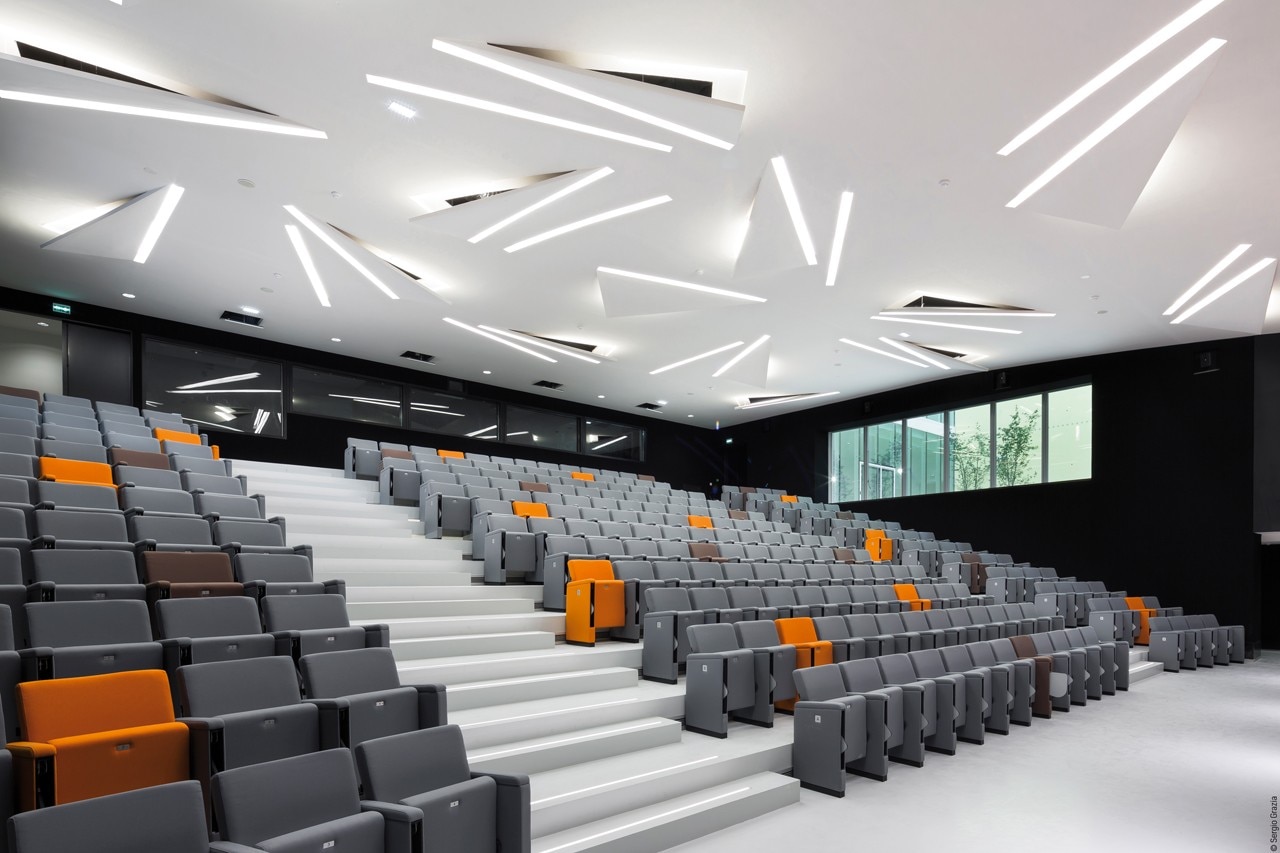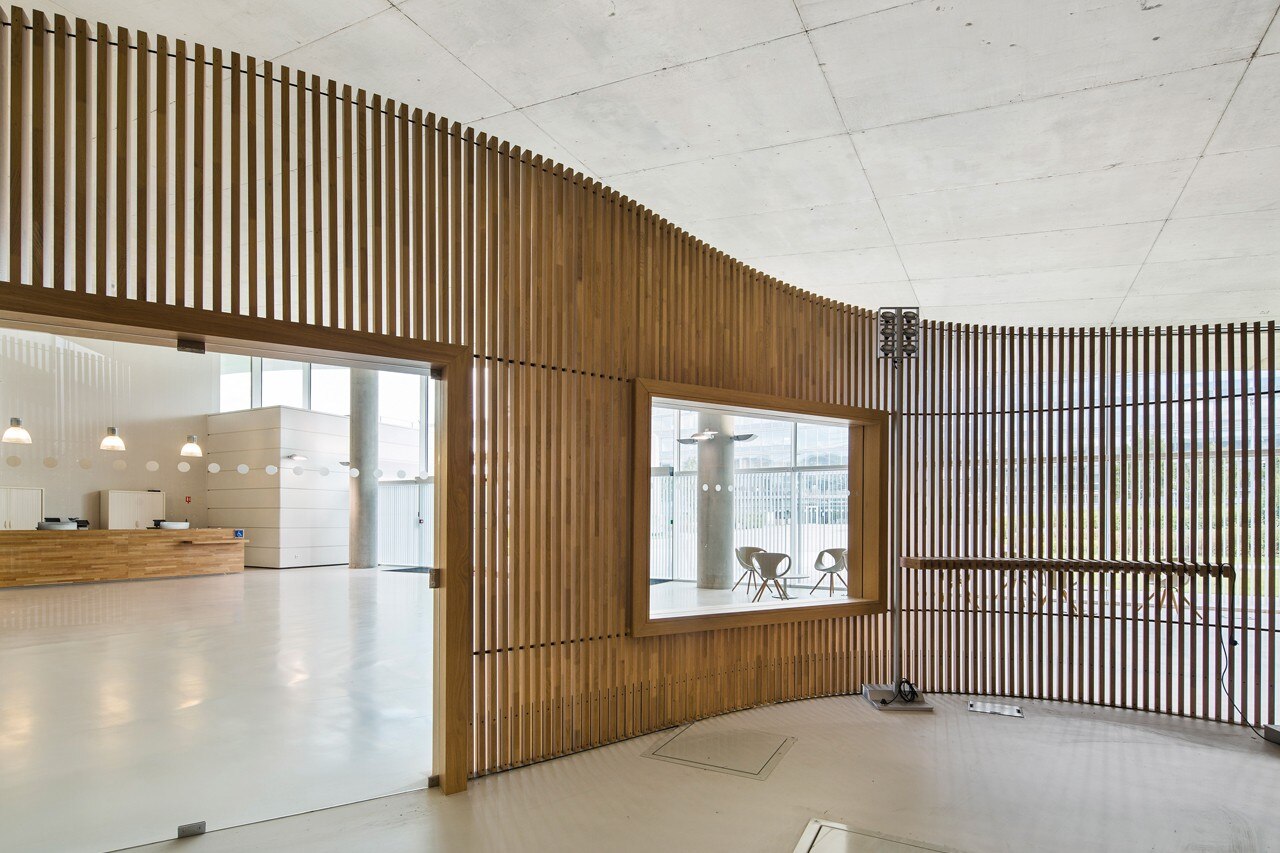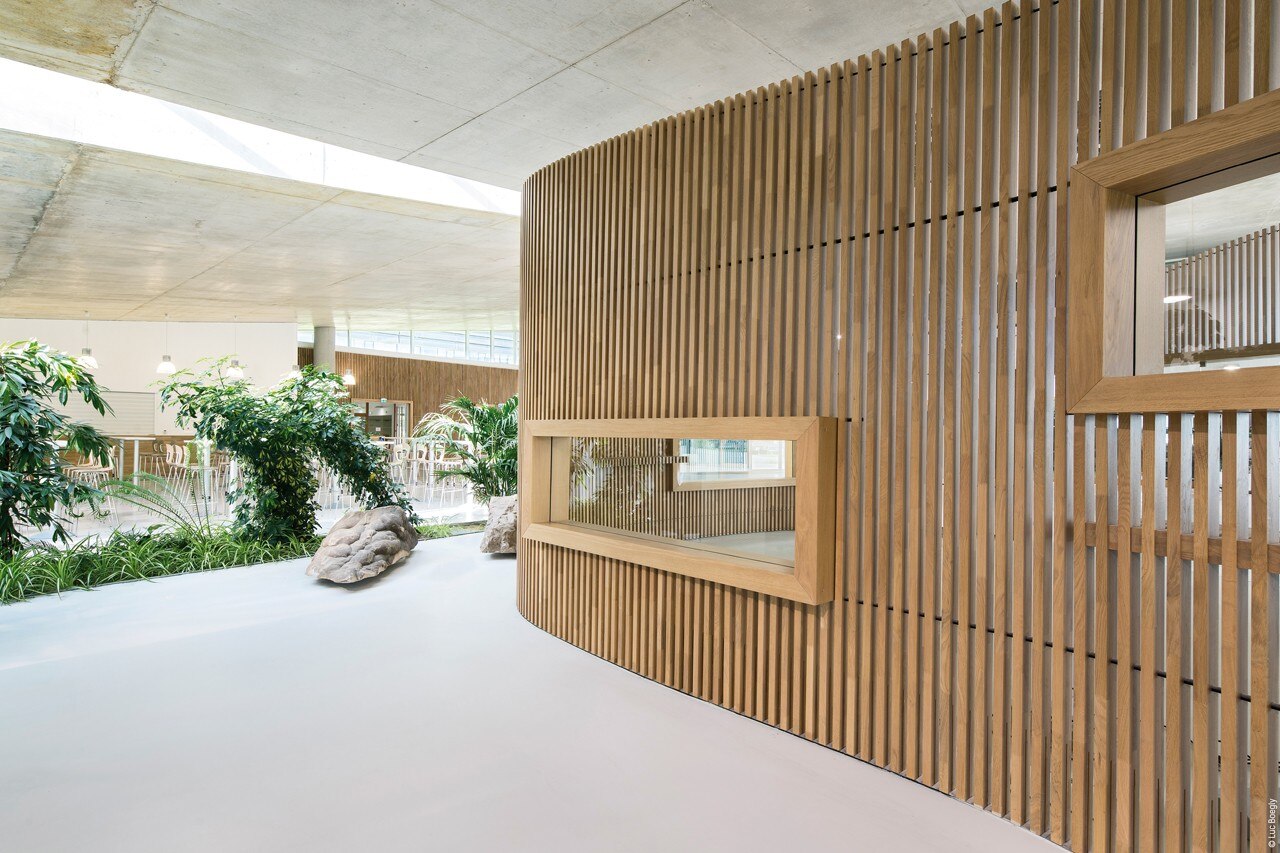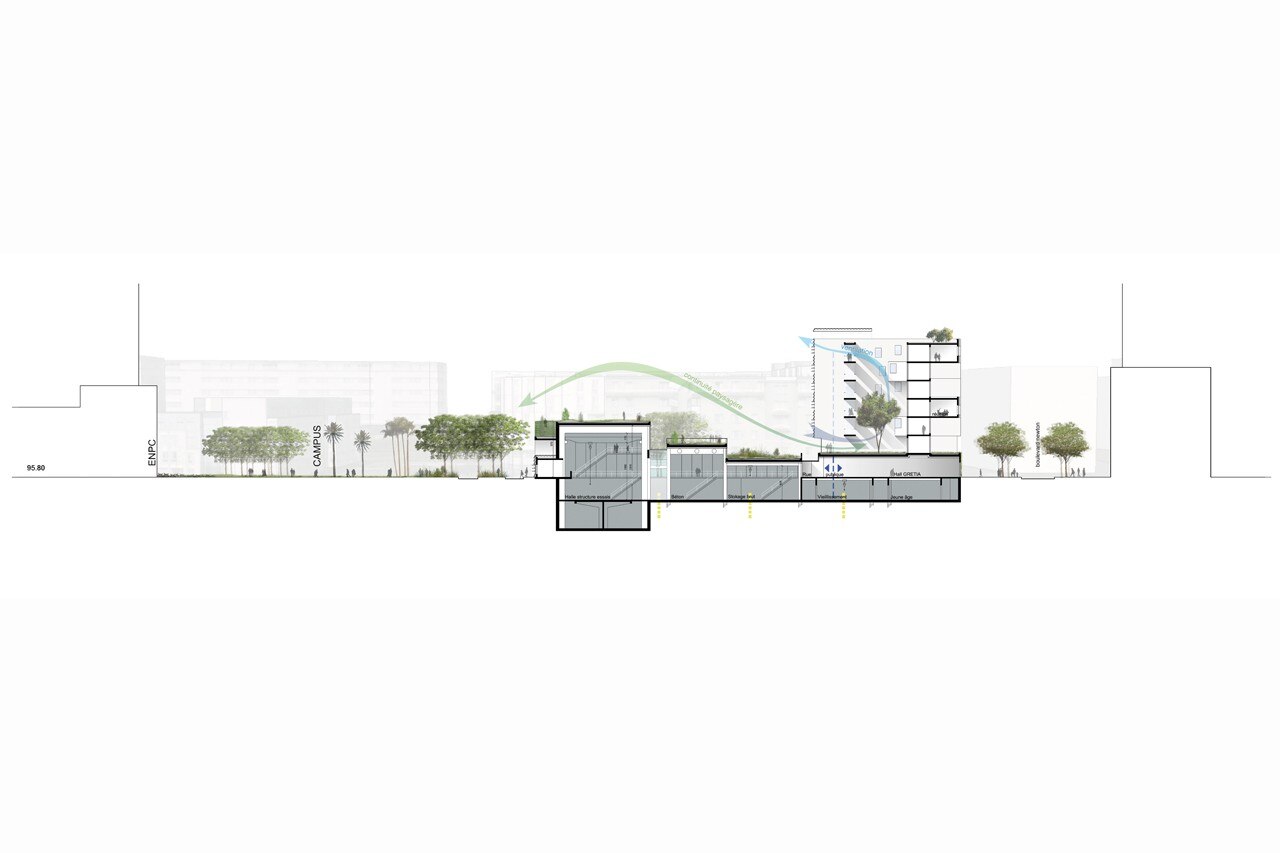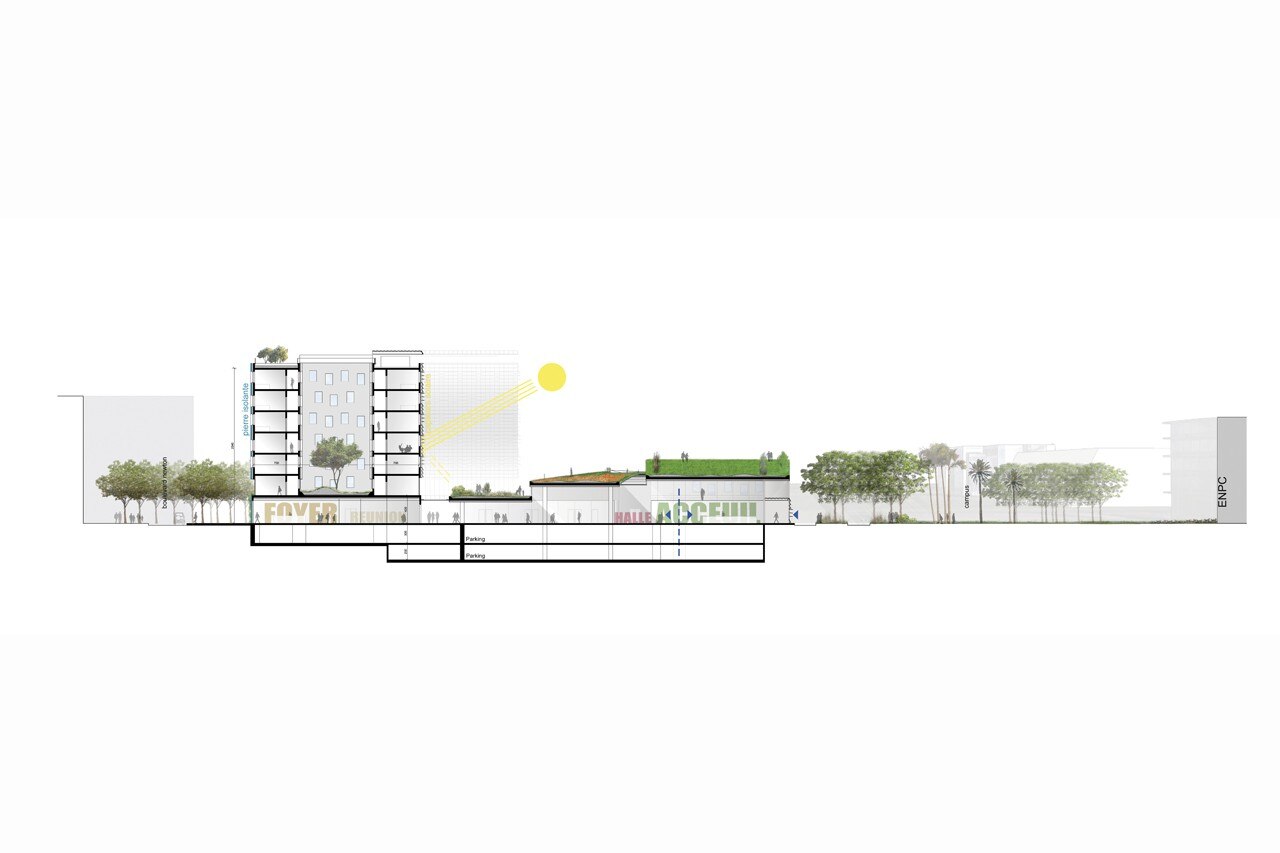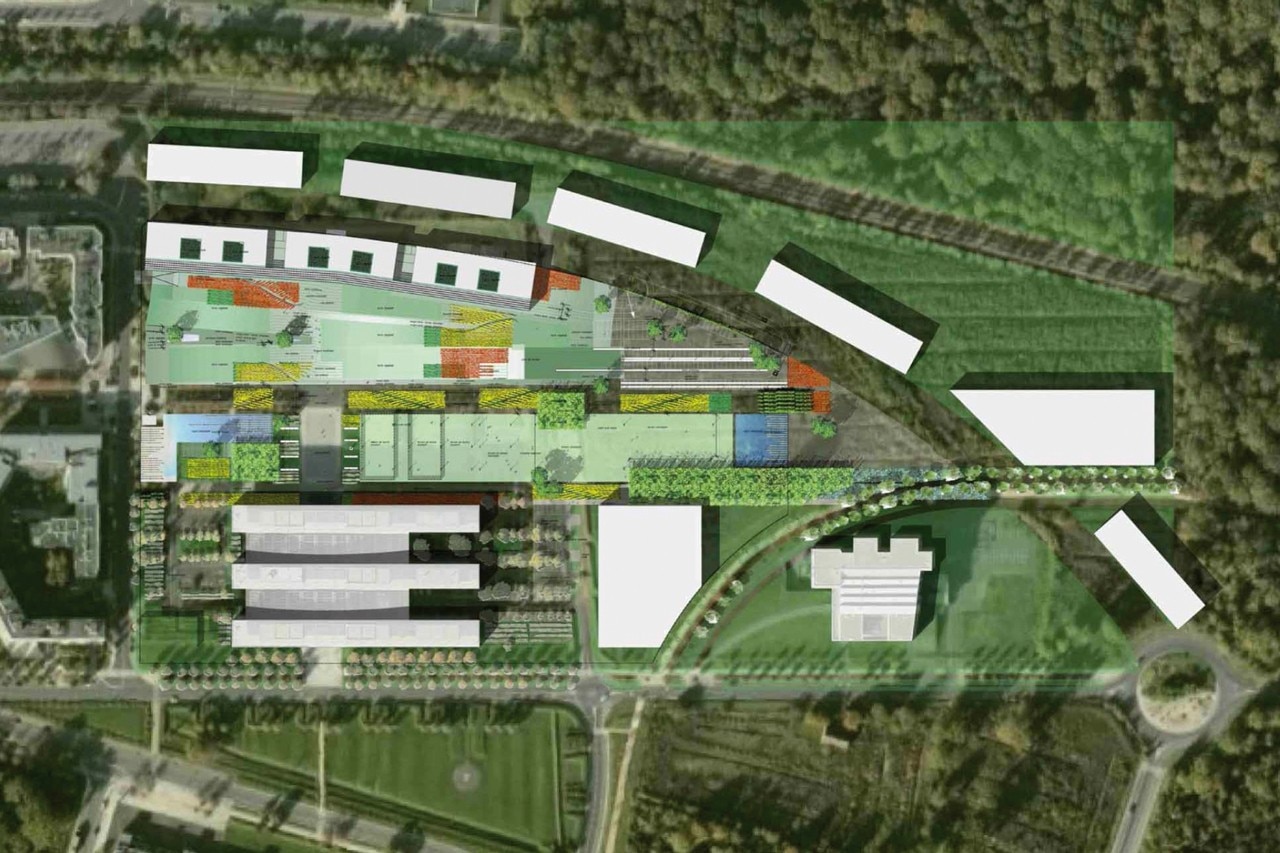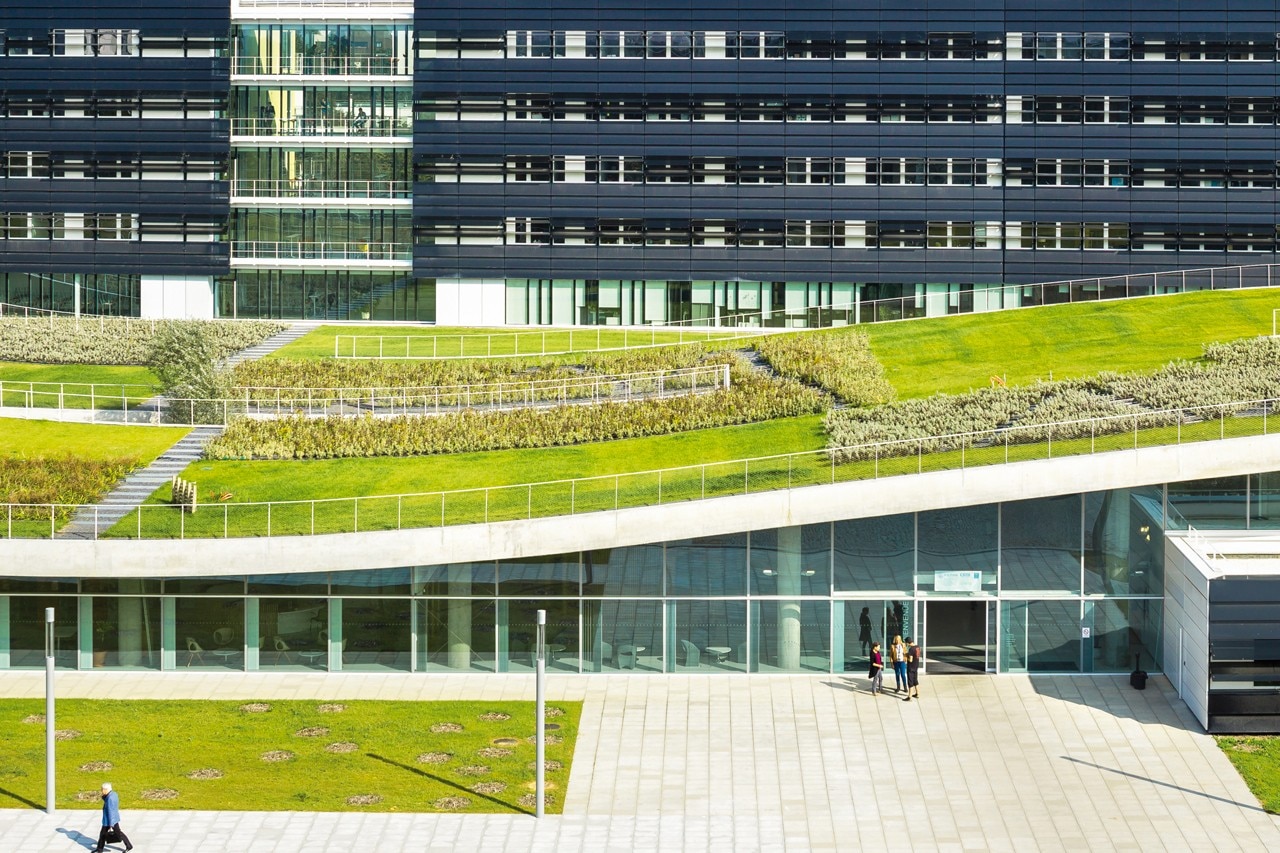
The new Bienvenue building is flexible, multi-functional and scalable. Its architecture fosters exchanges between the disciplines and the organisation of teamwork. This is achieved with the large multi-purpose area on the ground floor, under the arch. It brings together all the shared functions: library, auditorium, restaurant, sports rooms and a technical area made up of a monumental test hall, laboratories and meeting rooms. The layout of the main reception lobby in the axis that crosses the lobby of the Ecole Nationale des Ponts et Chaussées reinforces the complementarity between teaching and research.
The office area located in a unit along the Boulevard Newton reconciles the independence and autonomy of each speciality. The shared functions are in glassed areas that are bathed in natural light. They give a feeling of great transparency and perspective and overlook the large park, while the office division is made airy with the patios that contribute the warm atmosphere of the place and the well-being of users.
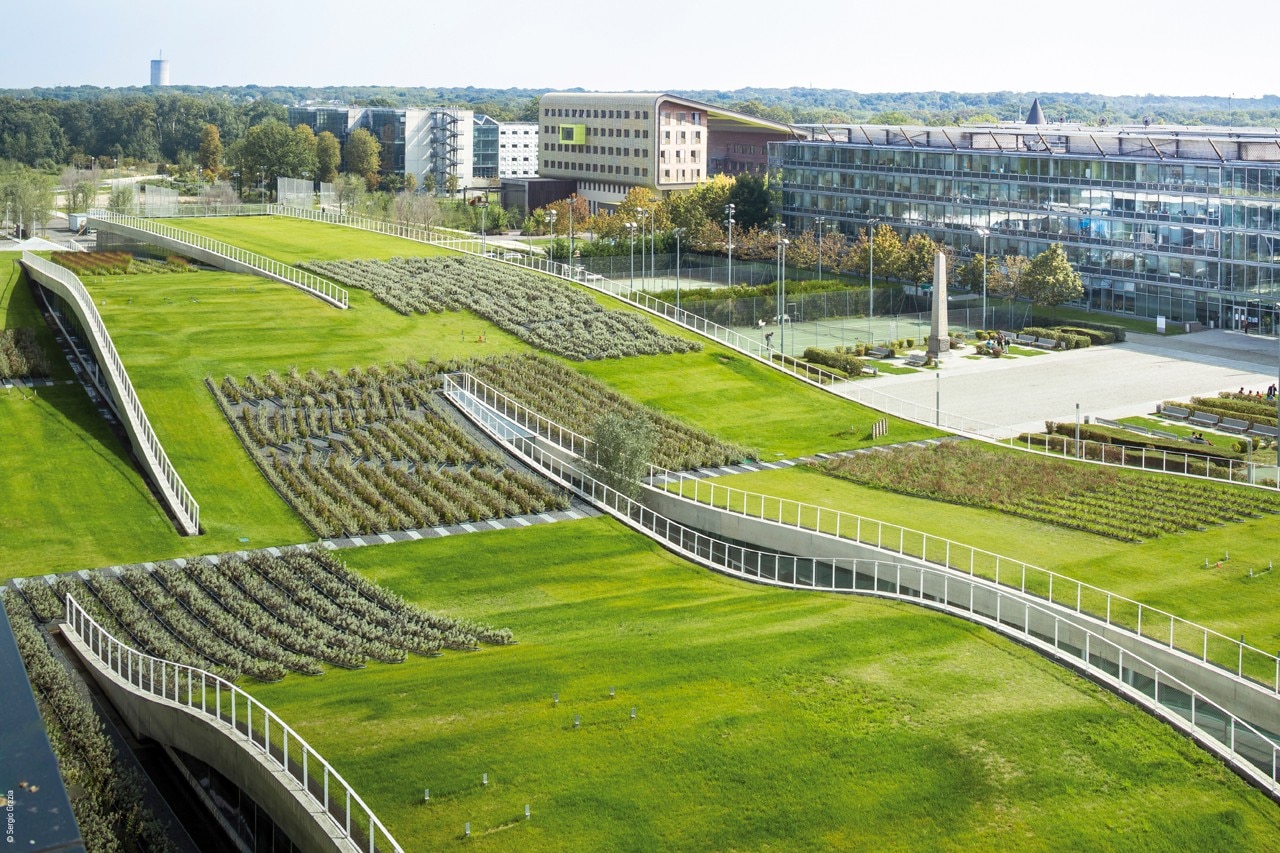
The architectural approach integrates all the innovations that promote sustainable development. It highlights the relationship between the environment, energy management, servicing and maintenance, hygrothermic and visual comfort.
Special emphasis has been placed on the low-energy target, and the building now has the BBC label. This objective will be achieved through an overall bioclimatic design: orientation and insulation of the building (south facade largely open towards the campus and retrieving solar energy, north facade more closed and thus offering an insulating wall with a strong thermal inertia), natural ventilation, rainwater collection, insulating materials.
The main source of energy for heating and cooling the building is geothermal energy obtained from the groundwater body. The project thus draws its inspiration from a perfect match between a content - laboratories conducting the most innovative research in terms of sustainable development - and its container - the architecture that surrounds and organises it, which is highly environmentally, energy and ecologically efficient.
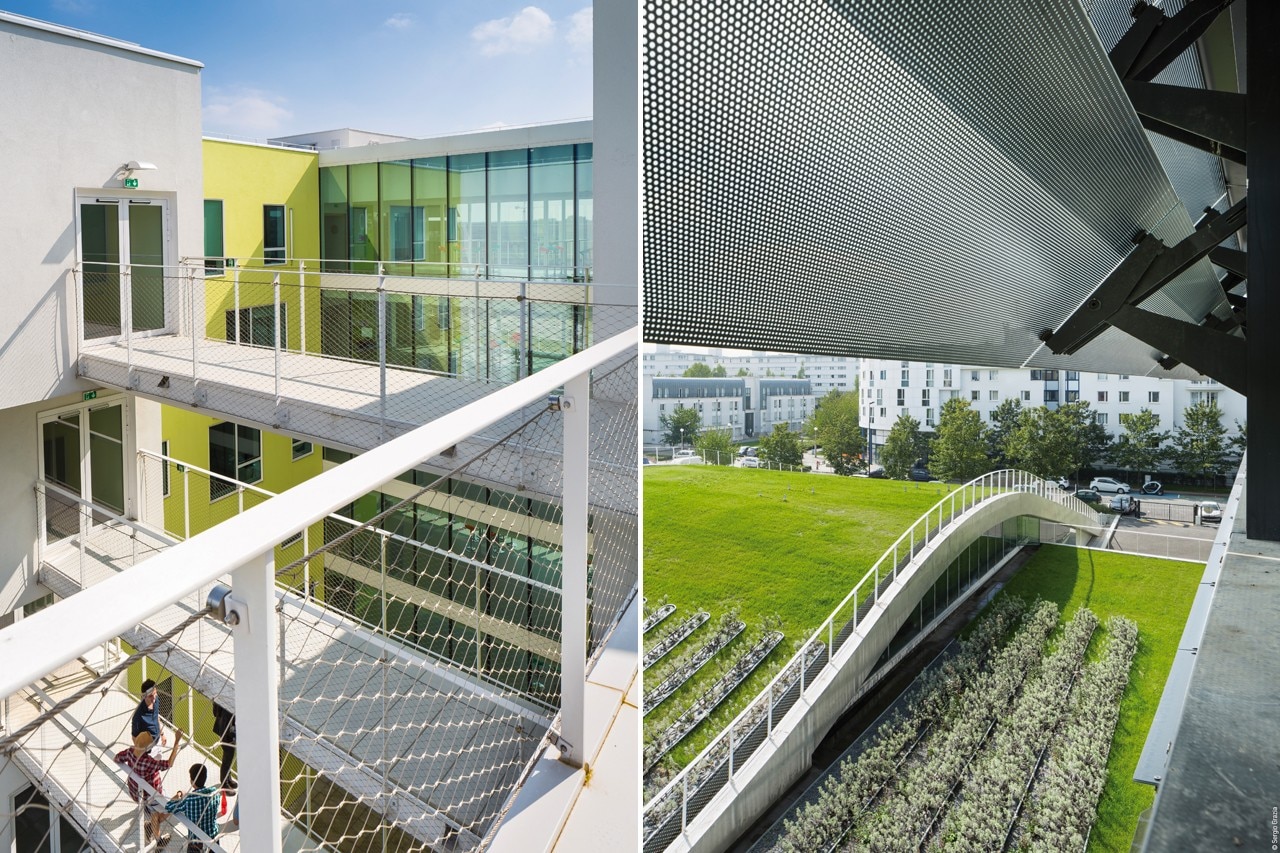
Paris-Est Scientific and Technical Pole, Marne-la-Vallée, Paris
Program: university campus
Architects: Jean-Philippe Pargade Architectes
Project management: Jean-Philippe Pargade, Besson-Girard, SNC Lavalin Voxoa, Penicaud Green Building (HQE)
Project management team: Caroline Rigaldiès, Jean-Pierre Lamache, Birgit Eistert, Christophe Aubergeon, Malika Benzemra, Marco Carvalho, Joana César, Paolo Correia, Jean-Patrick Degrave, Emmanuèle Fiquet, Emilie Guyot, Antoine Hermanowicz, Joon-Ho Lee, Aline Marthon, Natacha Nass, Lucy Niney, Audrey Oster, Maxime Parin, Anne-Sophie Richard, Samuel Rimbault, Vincent Sengel, Ji Yeon Song, Marie Suvéran, Arthur Tanner, Van Hai Vu
Client: Ministry of Ecology, Sustainable Development and Energy – Property and Housing actiondelegation
Works budget excluding VAT: €95 million
Area: 35,300 sqm
Completion: 2014


